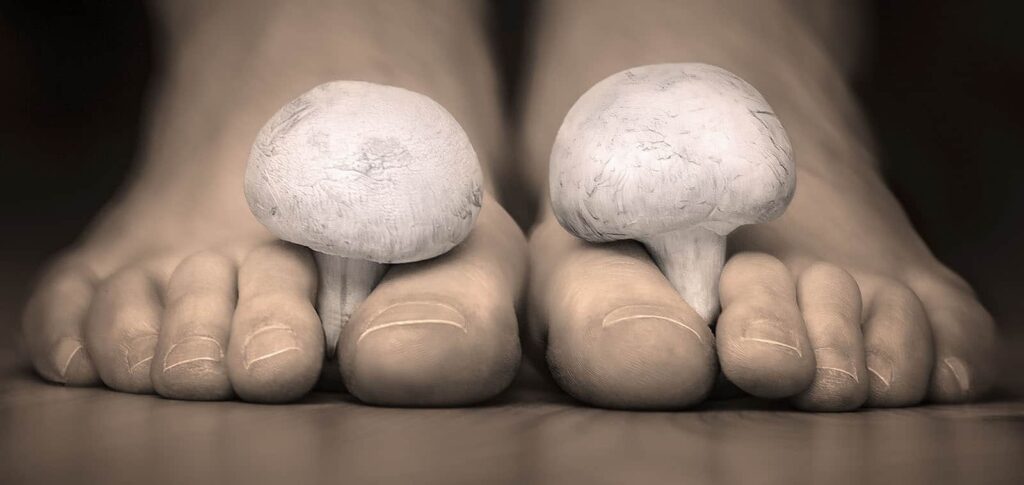Dermatophytomas
What is this under-recognized condition?
Dermatophytomas are localized, compact masses of fungal elements within the nail, often associated with onychomycosis (fungal nail infection). They are caused by dermatophytes, which are a group of fungi that invade keratinized tissues such as skin, hair and nails. The condition can be particularly challenging to treat due to the dense fungal mass embedded within the nail.
Some suggest around 80% of cases are located at the 1st toenails and dermatophytoma are a histological anomaly – responsible for the failure of topical and sometimes oral agents, owing to its loose attachment to the overlying nail plate and underlying nail bed. The dermatophytoma is often located in an “air gap” or onycholytic (loose) portion of the nail.
Symptoms
- Nail Discoloration. The nail often appears yellow or brown, with visible areas of dense, localized discoloration.
- Nail Deformity. The affected nail may become thickened, brittle and distorted.
- Pain and Discomfort. In some cases, the condition may cause pain, especially if the fungal mass exerts pressure on the underlying nail bed.
Treatment of Dermatophytomas
Dermatophytomas are particularly resistant to standard anti-fungal treatments due to the dense fungal mass. Treatment options may include:
- Oral Antifungals. These medications work by inhibiting fungal cell membrane synthesis, but they may require prolonged use to be effective against dermatophytomas. Side effects can be serious.
- Topical Antifungals. Topical treatments alone are often insufficient. However, combination with oral antifungals may be used.
- Mechanical Debridement. Physical removal of the fungal mass through debridement can enhance the effectiveness of antifungal therapies. This may involve manual filing, laser therapy or chemical treatments to soften and remove the infected nail tissue.
- Surgical Removal. In severe or refractory cases, surgical removal of the affected nail may be necessary.
- Some can opt for laser as an add on treatment
We are now independent prescribers able to prescribe any medication from the BNF relevant to the lower limb, foot and ankle.
Are you suffering from any foot condition? At The Chelsea Clinic, we can help. One of our podiatrist can assist and then recommend what treatments are best to get you back on track. Podiatrist South Kensington
Schedule an appointment here or you may call us at +44 (0) 207 101 4000.
We hope you have a feetastic day!
-The Chelsea Clinic and Team




